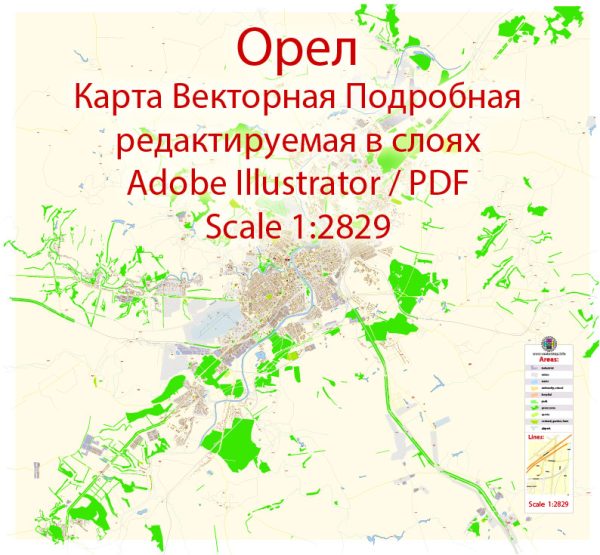Orel, also spelled Oryol, is a city located in the western part of Russia, in the Oryol Oblast. The city has a rich history that spans several centuries, and its urban development has been influenced by various historical, cultural, and economic factors.
Early History: Orel’s history dates back to the late 16th century when it was founded in 1566 by Ivan the Terrible. The city’s strategic location on the Oka River contributed to its early development as a fortress and trading center. During this period, Orel played a role in defending Russia against the Crimean Tatars and other external threats.
Imperial Russia: In the 17th and 18th centuries, Orel continued to grow, becoming an administrative and economic center in the region. It became part of the Russian Empire and experienced economic development, with the emergence of trade, crafts, and agriculture. The city’s layout began to take shape with the construction of churches, government buildings, and residential areas.
19th Century: The 19th century brought further changes to Orel. The city expanded industrially and culturally, with the development of manufacturing and educational institutions. Railways connected Orel to other parts of the country, facilitating transportation and trade. Architectural styles of the time, including neoclassical and eclectic influences, left their mark on the cityscape.
Soviet Era: The Soviet period witnessed significant urban planning and development in Orel. Industrialization continued, and the city’s infrastructure expanded. Housing projects, factories, and public buildings were constructed to meet the demands of the growing population. The city also played a role in World War II, with many of its structures suffering damage during the conflict.
Post-Soviet Period: After the collapse of the Soviet Union, Orel, like many other Russian cities, underwent economic and social changes. The transition to a market economy brought challenges, but the city gradually adapted to new circumstances. Some historical buildings were restored, and efforts were made to preserve the cultural heritage of Orel.
Contemporary Orel: In the 21st century, Orel continues to be an important regional center with a mix of historical and modern elements. The city features a blend of architectural styles, ranging from historic structures to more contemporary designs. Urban planning efforts focus on maintaining the city’s historical character while addressing the needs of a modern, dynamic population.
Overall, Orel’s history of urban development reflects its strategic importance, economic growth, and the impact of various historical periods on its architecture and layout. The city’s historical and cultural heritage, combined with ongoing urban planning initiatives, contributes to its identity as a significant center in the Oryol Oblast.


 Author: Kirill Shrayber, Ph.D.
Author: Kirill Shrayber, Ph.D.